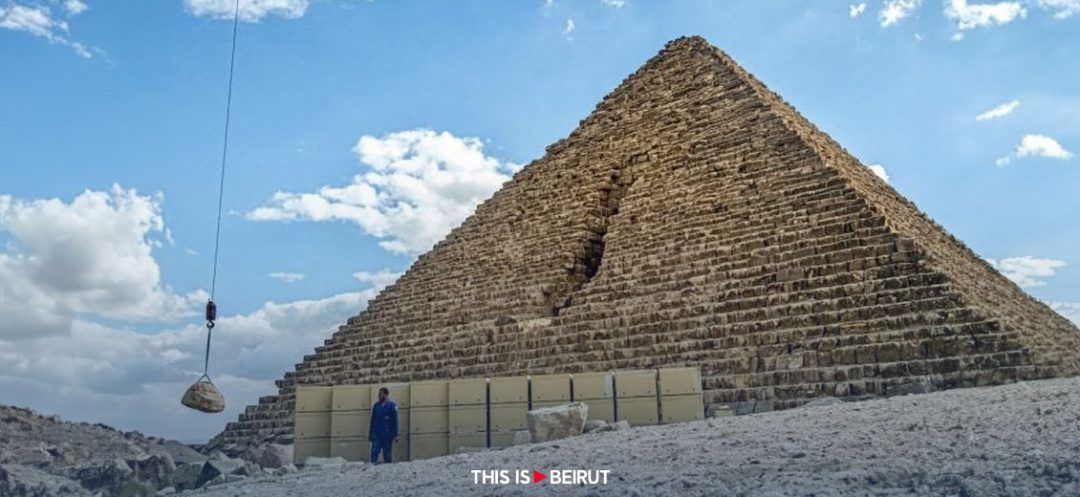
Egypt’s ambitious plan to clad one of its ancient pyramids in granite has ignited a firestorm of debate among heritage experts, Egyptologists, and the global community. The project, targeting the Menkaure Pyramid, the smallest of the iconic trio on the Giza plateau, represents a bold attempt to restore the structure to its purported original glory. However, the renovation has been met with skepticism and concern, raising pressing questions about conservation ethics and the management of world heritage sites.
Mostafa Waziri, the head of Egypt’s Supreme Council of Antiquities, unveiled the project via a Facebook video on January 25, sparking immediate controversy. The footage showed workers excavating sand and laying gray blocks at the pyramid’s base, signaling the start of a three-year endeavor to return the 213-foot monument to its granite-clad state. According to Waziri, this project is meant to be “Egypt’s gift to the world,” echoing the national pride that accompanied the Suez Canal expansion.
Constructed around 5,000 years ago, the Menkaure Pyramid was built from limestone, granite, and mortar, serving as the eternal resting place for the pharaoh Menkaure. The decision to cover it in granite is not just an aesthetic one; it is an intervention that has drawn sharp criticism for potentially contravening the principles of archaeological conservation.
Critics like Monica Hanna, a prominent Egyptologist, have been vocal about their concerns, questioning the wisdom behind the project’s approach to heritage management. Hanna argues that such interventions could lead to “visible problems and major damage,” undermining the monument’s integrity. Similarly, Hussein Bassir, the director of antiquities at the Biblioteca Alexandrina, emphasized the need for extreme caution and a thorough risk assessment before proceeding with such a significant alteration to a key piece of human history.
The project’s reliance on technology provided by Japanese partners, who allegedly lack the necessary archaeological expertise, has also been a point of contention. Salima Ikram, an Egyptologist at the American University in Cairo, suggested that the renovation might be acceptable if it only uses stones originally found around the pyramid, avoiding the introduction of alien materials that could compromise its historical authenticity.
Public reaction has been overwhelmingly negative, with social media users drawing sarcastic comparisons to other controversial restoration ideas, such as straightening the Tower of Pisa. The outcry has prompted Egypt’s Ministry of Antiquities to pause and reassess the project’s feasibility, signaling a potentially more reflective approach to managing the country’s priceless heritage.
This episode underscores the delicate balance between preserving historical authenticity and the desire to restore monuments to their former state. As the debate unfolds, it highlights the broader challenges facing heritage conservation in the 21st century, where the line between restoration and alteration can often blur. The future of the Menkaure Pyramid and potentially other ancient structures hangs in the balance as experts and the public alike grapple with these complex issues. Ultimately, the controversy serves as a reminder of the global responsibility to safeguard our shared history for future generations, ensuring that interventions respect the past while embracing the present.
Read more



Comments